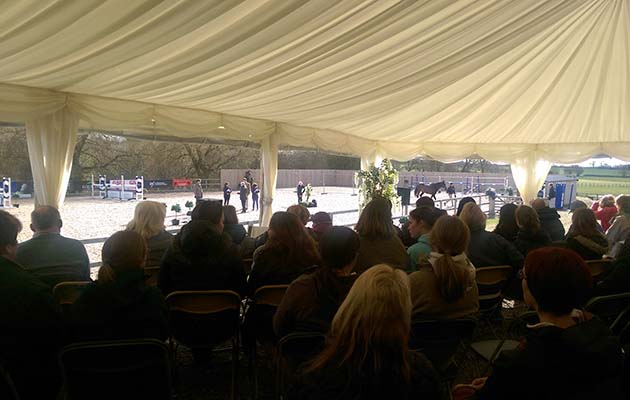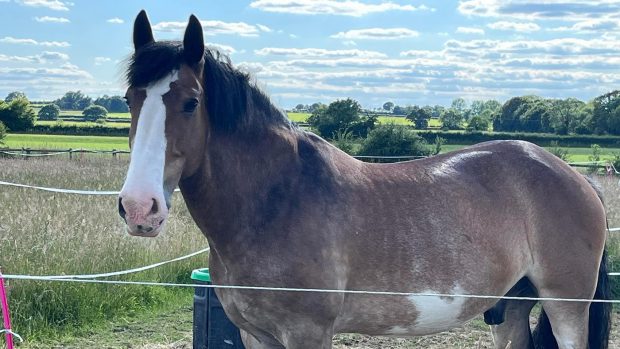Horse & Hound's sport horse breeding editor reflects on the Harthill/Bolesworth breeding seminar and educational morning, which included tips on reducing OCD, avoiding breeding from average mares, spotting loose-jumping talent and the launch of a new yearling sale
It takes a lot to organise a good event — an awful lot. So hats off to Nina Barbour and her Harthill/Bolesworth teams for the breeding seminar and educational morning held in Cheshire on 23-24 March.
At Monday’s evening event, the best part of 300 breeding enthusiasts gathered for a (hugely under-priced at £30) evening with panel session and dinner in the Carden Park Hotel.
Oliver Townend and William Funnell represented the British voice on the panel, joined by the eminent Dutch breeders Paul Hendrix and Arie Hamoen, Irish former young rider showjumper Enda Carroll turned dealer based in Belgium, and Harthill’s vet, Sarah Stoneham of the Cheshire Equine Clinic.

Conversation was wide-ranging and opinions forthright.
Some of the research presented by Sarah Stoneham was eye-opening. OCD (bone chips) are a well-documented issue in modern sport horses, and Sarah outlined some of the major factors in its occurrence.
Foals allowed irregular exercise, those turned out on paddocks larger than 2.5 acres in the first two weeks of life and those on paddocks larger than 15 acres before they are two months old were all at increased risk of OCD.
It’s a delicate balance between allowing foals the freedom to move around naturally, while preventing them hooning about and doing damage to young and fragile leg structures.
In older youngsters (six to 18 months old), a huge risk factor for OCD is turnout on roughened terrain. Young bones end up with undue asymmetric strains on them, and edges can chip off. At this age, paddocks over 15 acres were also a factor, while — most surprisingly for me — “mixed housing” was also detrimental. Mixed housing includes horses stabled at night and turned out during the day; a scenario many have long felt optimal for youngsters.
British-breds under the British flag
Currently, horses can only compete at the WBFSH [World Breeding Federation for Sport Horses] World young horse championships under the flag of the nation in which their studbook resides. So, if a horse conceived and bred in Britain is passported with the Dutch KWPN or the German Oldenburg studbooks, they represent the studbook’s nation at the championships, not Britain.
Panelist William Funnell said: “Horses born in the UK — regardless of which studbook they are registered with — should go down as being British and should be able to compete for Britain. Why is it different for horses than it is with people in that respect?”
Arie Hamoen pointed out that Britain could raise this point with the WBFSH. There were murmurs of approval throughout the room.
Identifying stars of the future
The following morning — another sell-out — involved practical examples of horses in-hand, loose and under saddle at Harthill Stud, followed by lunch in the spectacular castle, overlooking the impressive site of the Bolesworth CSI (18-21 June).
Oliver and the two Dutchmen discussed the differences you’d expect to see between a young event horse and a showjumper. Oliver doesn’t look for the same amount of scope; good eventers have a generous dash of thoroughbred which perhaps means they are less ‘complete’ looking young horses who develop their courage and ability later in life.

He explained that the most important thing with an eventer is not that they get plenty of airtime over a fence, but that they have the ability and willingness to get over it.
At this year’s Bolesworth CSI, Nina and her team are trialling an auction of yearling sport horses. Some observers expressed concerns over choosing to exhibit yearlings. Looking at BEF Futurity data, yearlings consistently score lower than the other age categories as they are often in an ungainly growth stage, much like some teenagers.
But the entire panel agree that this format is worth a go, and hope to form a sale which will attract buyers of quality young sport horses curated by respected and honest sellers.
Initially, a foal sale was planned, but June was deemed too early in the year to have enough foals to select from. The panel also pointed out that more information is available about the animals as they are a year older.
Both Dutch representatives are fans of loose-jumping yearlings; over small fences and very sparingly.
Paul brings his yearlings in in May and loose-jumps them for three days in a row. He carefully analyses their reflexes, reactions and scope — though scope doesn’t top his list of essential attributes at this stage. He is more interested in how the young horse uses its body and reacts to the pole, adjusting its frame.
He then turns them away again, before having another look late in the year in the same way.
It will be that initial May assessment of yearlings which will determine the horses he puts forward for the Bolesworth sale.
I only hope there are enough people who understand the importance of a cracking pedigree and have the foresight to see what a yearling could blossom into come the auction.
Take-homes
This event was billed as “Breeding and producing the elite sport horse — a commercial approach”, but there were numerous useful take-home points for breeders small and large alike.
These included:
- Don’t breed from Fluffy just because she’s gone lame Oliver Townend
- Everyone can use any stallion in the world thanks to AI, so you better make sure your mare is better than everyone else’s to give you the edge Arie Hamoen
- Monitor foals very closely in the early stages of life using a combined team including vets and farriers. Even major limb deviations can be markedly improved Sarah Stoneham
- Choose a stallion based not only on a few pretty pictures and a carefully edited video; use the internet to find data on progeny and performace Arie Hamoen
- Look carefully at a mare’s pedigree (as well as the horse in front of you) when deciding whether to breed from her. If the pedigree is not interesting or exceptional, then don’t breed Paul Hendrix
- Don’t try to make a foal’s front legs too straight in its early weeks; as the chest broadens, you will end up with a toe-in horse. A small degree of toe-out on a foal is not a cause for concern Sarah Stoneham




